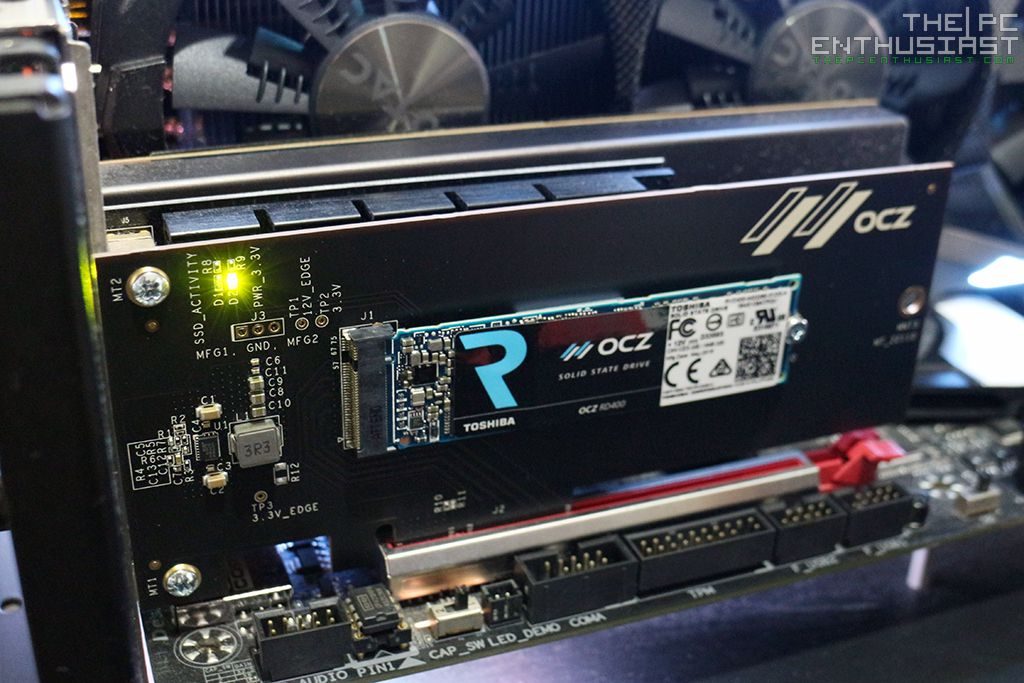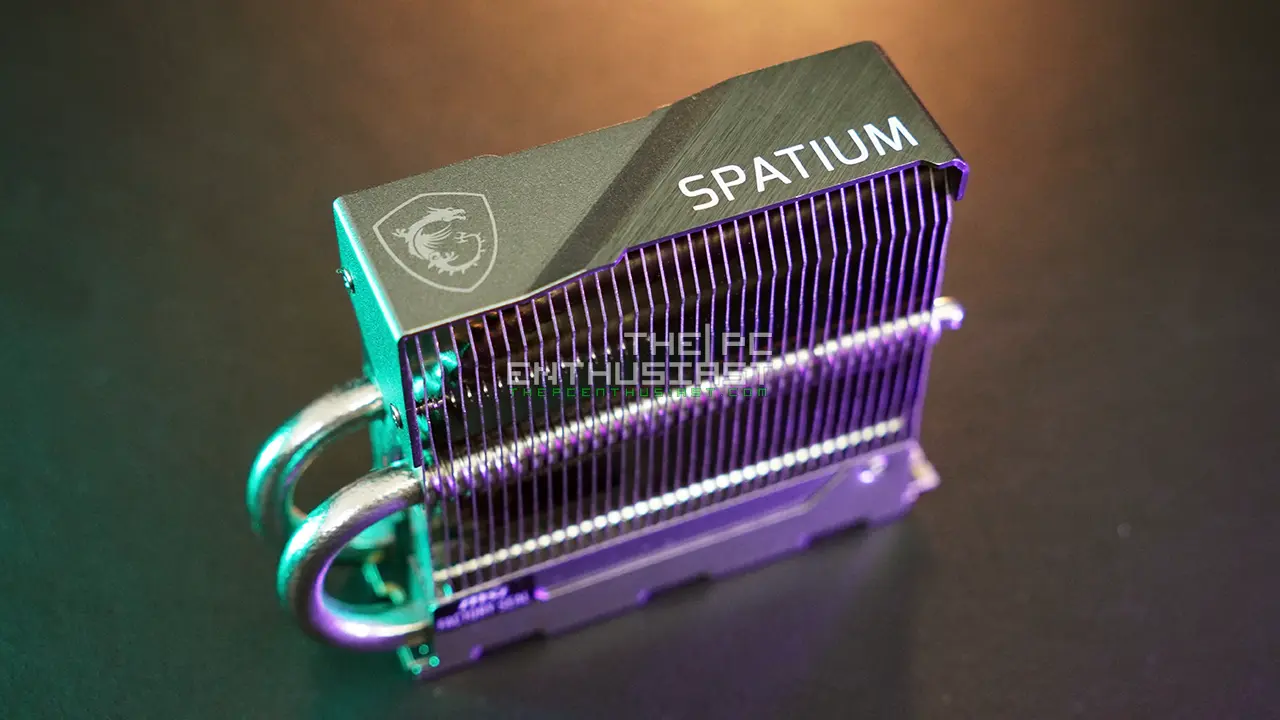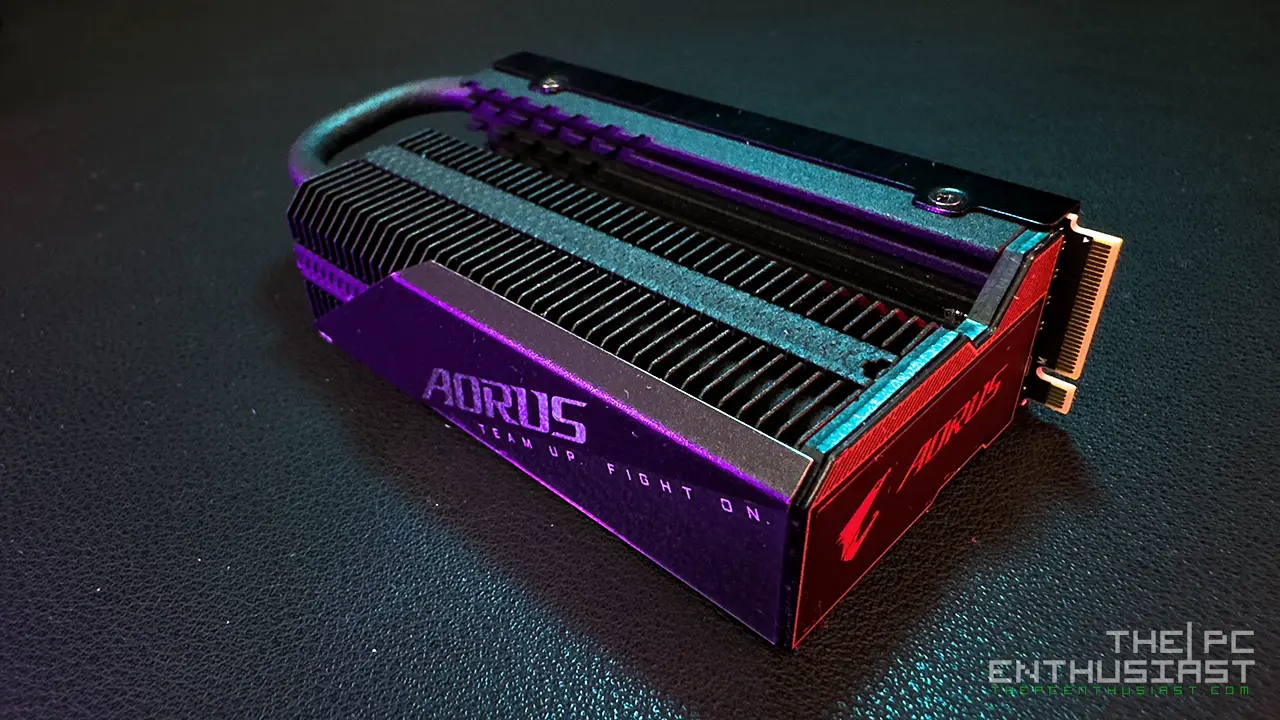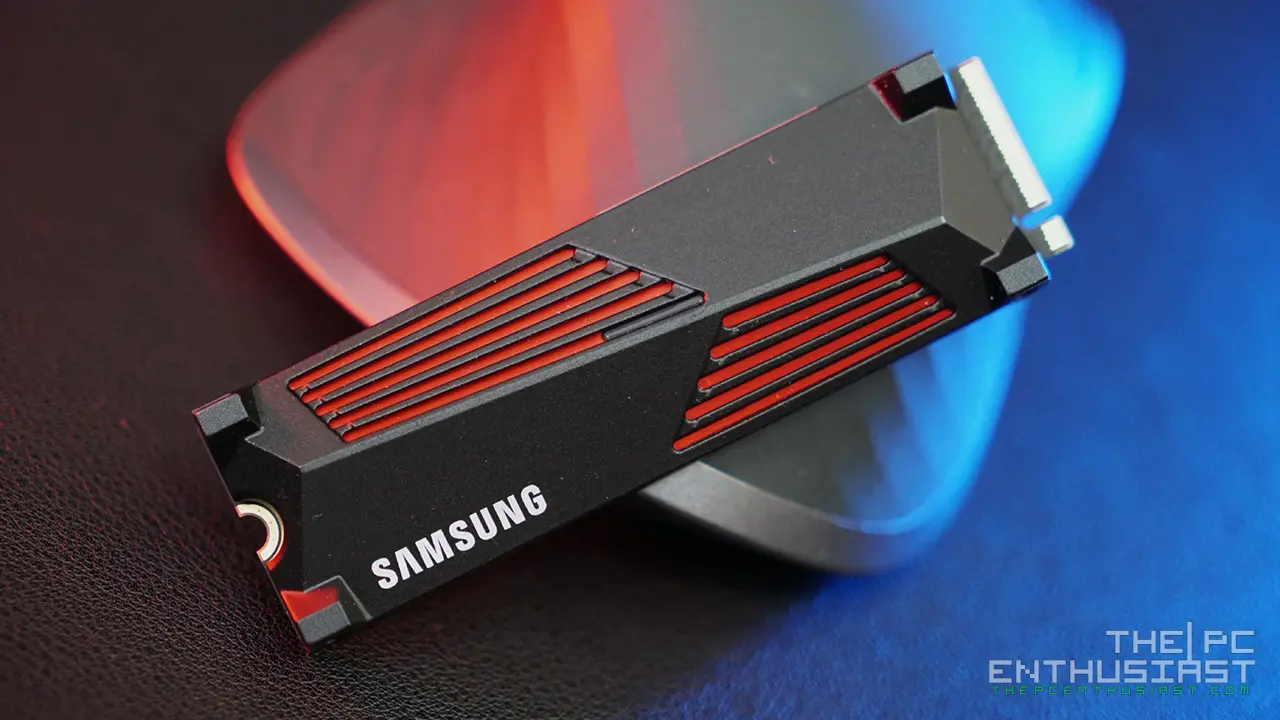Pricing and Availability
Toshiba’s OCZ RD400 NVMe M.2 SSD is now available in the US and UK, in both M.2 only and with PCIe add-in adapter. The table below shows the manufacturer’s suggested retail prices at launch. Toshiba is also offering a 5 year limited warranty and an Advanced Warranty Program. For the latest pricing and availability visit the following links below.
| Capacity | 128GB | 256GB | 512GB | 1TB |
|---|---|---|---|---|
| OCZ RD400 (M.2) | $109.99 | $169.99 | $309.99 | $739.99 |
| OCZ RD400A (w/ PCIe adapter) | $129.99 | $189.99 | $329.99 | $759.99 |
Toshiba OCZ RD400A NVMe PCIe M.2 Review: Conclusion
Okay, let’s wrap up this review. Toshiba’s OCZ RD400 NMVe SSD lineup is basically geared towards the pro consumers, content creators and enthusiasts who are simply looking for a storage drive with the fastest read/write performance. The OCZ RD400 offers sequential read and write speeds of up to 2,600 MB/s and 1,600MB/s respectively; or 4 KiB random read and write performance of up to 210,000 IOPS and 130,000 IOPS respectively. It’s the company’s flagship SSD and their first NVMe SSD for the consumers, not to mention they are also the first to offer a 1TB NVMe M.2 solution for consumers.
You have seen the benchmark results from the previous pages, but how do those numbers translate into real life scenario. The OCZ RD400 NVMe SSD when compared to a typical hard disk drive (or even the fastest hard disk drive around) the difference is simply day and night. It would feel that you just made a major or huge leap; Windows loads in seconds from power on, applications and overall desktop operation are very smooth and fluid, loading times (specially with games) are noticeably shorter, and waking up from sleep is just a matter of seconds as well. Of course, I am assuming that your OS or your applications doesn’t have errors, otherwise no matter how fast the drive if there’s a problem with your OS it may still affect the performance and that’s another topic.
How about if you are coming from an SSD already? On paper it may look like NVMe SSDs are significantly faster, about 5 times compared to SATA SSDs. However, in actual real world scenario or in actual usage, the difference is somewhat little. In fact you may not feel any difference at all specially when you are just doing typical desktop operations. In my case, I was able to notice the difference (between SATA SSD vs NVMe SSD) when copying several large files or when working with files that depend on the drive’s read and write performance. Unfortunately, there’s no huge difference in gaming as well. But this isn’t limited to the RD400 alone, I’m talking about all NVMe SSDs out there, including the Samsung 950 Pro, Zotac Sonix, Intel’s SSD 600p series, Patriot Memory’s Hellfire and so on.
Talking about performance, based on the benchmark results I got, the OCZ RD400’s performance was generally and overall great. It was at least near to the advertised speeds. However, there are some uneven performances that led it to not becoming the fastest around. For instance, you can see from the HD Tune Pro’s read/write benchmarks the consistent fluctuation (up and down) in the graph. AIDA64’s Random Write test is showing the fluctuations as well. This uneven performance affects the overall speed of the drive. A firmware update could fix the uneven performance. Hopefully Toshiba will release an update firmware (soon) to address this issue. But for now, it is keeping the drive to be the fastest NVMe SSD available. It’s currently the second fastest NVMe SSD we tested, second to Samsung 950 Pro.
However, Toshiba’s advantage over Samsung’s 950 Pro is the different capacities available (from 128GB up to 1TB) and having the option of an M.2 only or M.2 with a PCIe add-in-adapter. Also looking at the current retail prices from popular online stores, it seems that the OCZ RD400 is priced a little bit cheaper compared to the Samsung 950 Pro of the same capacity. The RD400A 512GB (with PCIe adapter) is currently even cheaper than Zotac’s Sonix 480GB.
Overall, the Toshiba OCZ RD400 PCIe NVMe M.2 SSD is a fantastic storage solution with blazing performance. It’s a storage solution worthy of a flagship title. Performance is great not only in paper but in actual as well, not to mention Toshiba is offering a 5 year long warranty together with their advance warranty program, making it really an attractive offer. The OCZ RD400 NVMe SSD surely deserves our highest recommendation.









